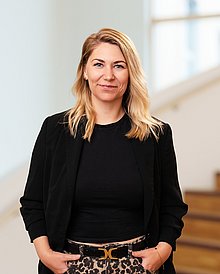How social media is helping to make medicines better
Research team at Witten/Herdecke University analyses data from online self-help groups for drug development

Online self-help groups are increasingly active on social media, providing a simple and low-threshold exchange of information, especially for chronically ill people. This involves sharing experiences in relation to certain therapies; however, those affected often also provide each other with emotional support, as the level of suffering is particularly well understood within a self-help group. In addition, patients share solutions to problems that arise in the context of their illness. This social media data therefore offers insights into a wide range of clinical pictures and needs.
This information has the potential to promote patient-centred medical innovation because it reflects the real everyday needs of those affected. However, there is a problem here: manually processing, evaluating and analysing these large amounts of data is practically impossible. However, this can be solved with the help of social media mining, an automated analysis of social media data that is often supported by artificial intelligence. In a recently published article in the renowned journal "Drug Discovery Today" (Impact Factor 7.85), scientists from Witten/Herdecke University (UW/H) and two pharmaceutical companies show methods and use cases of social media mining for innovation management in the pharmaceutical industry.
Possible applications for social media mining
Social media mining in online self-help groups can initially be used primarily to identify the description of patients' needs in their own words in data sets and prioritise them in terms of importance. In a next step, patient groups with similar needs can also be formed from this data and further analysed. The results of these analyses can be used in research on patient-centred medicines. In later phases of the development process, they can support recruitment via social media for participation in studies.
However, social media mining also provides completely different insights: "We can also recognise in the data when drugs are taken by patients for certain diseases outside of the previous approval," explains Jonathan Koß, first author of the study and doctoral student at the Chair of Management and Innovation in Health Care at the university. "This can then be used to form hypotheses for drug repurposing, i.e. considerations for the authorisation of an existing active substance for a previously unused indication." Another use case is the search for reports on events that indicate adverse drug reactions. "Overall, social media mining offers great potential for tapping into innovation impulses. This can support the development of drugs that have value for patients and are then also commercially successful," says project manager Prof Dr Sabine Bohnet-Joschko, categorising the results.
Further use cases and the basic methods are described in detail in the publication (open access):
J. Koss, A. Rheinlaender, H. Truebel, and S. Bohnet-Joschko, "Social media mining in drug development-fundamentals and use cases", Drug Discovery Today, 2021. DOI: 10.1016/j.drudis.2021.08.012
The publication is part of the ATLAS ITG project. The project is funded by the state of North Rhine-Westphalia. It supports theory-practice transfer by analysing current studies and brings together lighthouse projects and players in digital health management in NRW.
Contact person

Svenja Malessa
Press Officer
Administration | Communication & Marketing
Alfred-Herrhausen-Straße 48
58455 Witten
Room number: 2.F05